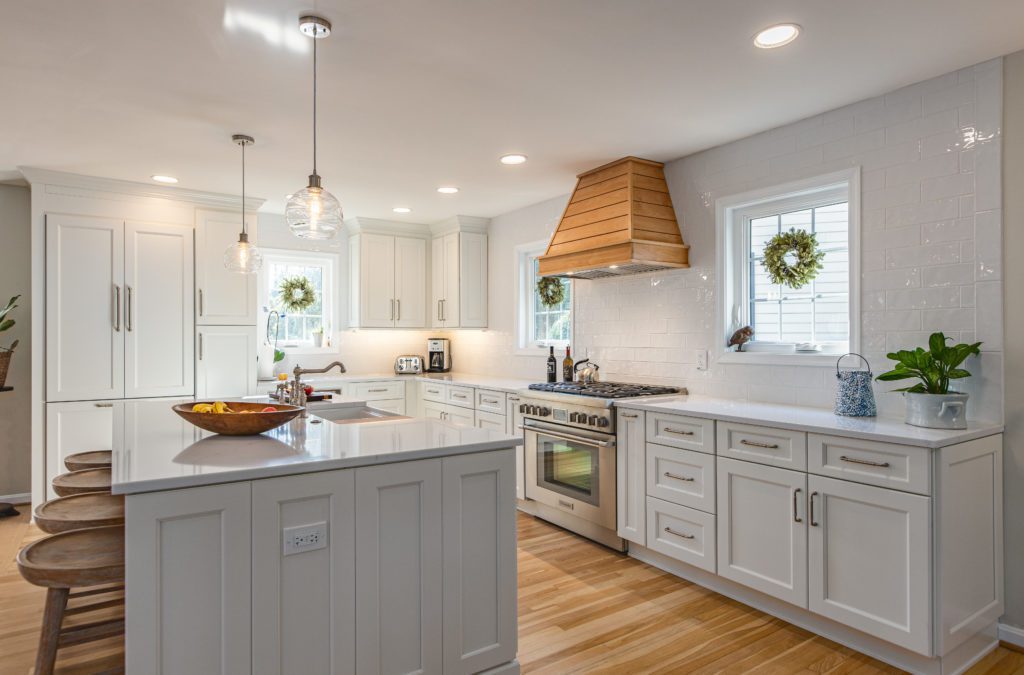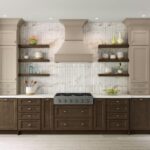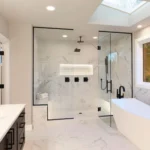Table of Contents
Toggle10 Tips for Estimating Kitchen Renovation Costs
Are you planning to renovate your kitchen but unsure about the costs involved? Estimating the expenses of a kitchen renovation can be a daunting task, but with these 10 helpful tips, you can accurately estimate the costs and stay within your budget.
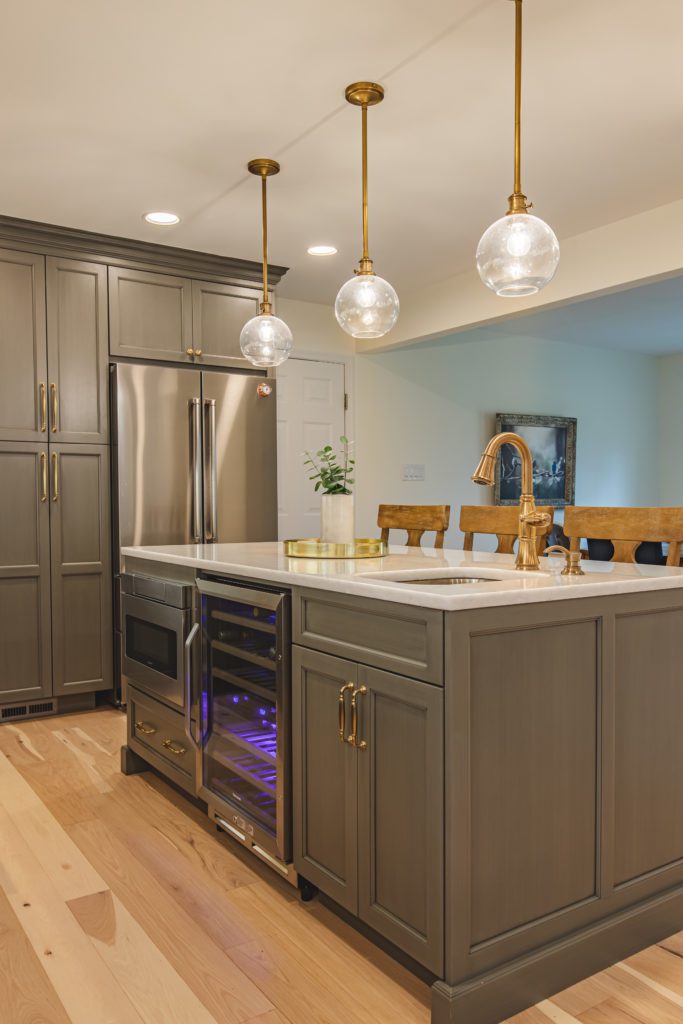
1. Set a Budget: The first step is to establish a realistic budget for your kitchen renovation project. This will serve as a guide for your cost estimates and ensure that you don’t overspend.
2. Research Material Costs: Before diving into the renovation, research the prices of different materials such as cabinets, countertops, and flooring. This will give you an idea of their average costs and help you factor them into your estimates.
2.1 Cabinets: Understand the various cabinet options available and their associated costs. Custom-made cabinets offer the highest level of customization but are typically the most expensive. Semi-custom cabinets provide a balance between customization and affordability. Stock cabinets are the most cost-effective option.
2.2 Countertops: Explore different countertop materials like granite, quartz, and laminate. Consider their durability, aesthetics, and cost to determine the best fit for your budget.
2.3 Flooring: Research the costs of various flooring options such as hardwood, tile, and vinyl. Take into account factors like durability, maintenance, and installation expenses.
3. Plan for Labor Costs: Don’t forget to include the cost of hiring professionals like contractors, electricians, plumbers, and painters. Their expertise and services will contribute to the overall renovation costs.
3.1 Contractor Fees: Understand the fees associated with hiring a contractor, including their hourly rates and project management fees.
3.2 Other Professional Services: Consider the costs of hiring electricians, plumbers, and painters. Factor in their hourly rates or fixed fees, as well as any additional expenses for permits or inspections.
4. Account for Appliances: Include the costs of new appliances such as refrigerators, ovens, and dishwashers in your estimates. Consider factors like brand, features, and energy efficiency.
5. Anticipate Unforeseen Expenses: Set aside a contingency fund to account for unexpected costs that may arise during the renovation process, such as structural issues or design changes.
By following these 10 tips, you can accurately estimate the costs of renovating your kitchen and ensure that your project stays within your financial limits. Happy renovating!
1. Set a Budget
When embarking on a kitchen renovation project, it is crucial to establish a realistic budget right from the start. Setting a budget will not only help you keep track of your expenses but also guide your cost estimates throughout the entire renovation process. By determining your financial limits, you can ensure that you stay within a comfortable range and avoid any unexpected financial burdens.
Creating a budget for your kitchen renovation involves carefully considering various factors such as the scope of the project, the materials you plan to use, and the labor costs involved. It is essential to take into account both the big-ticket items and the smaller details to get an accurate estimation of the overall expenses.
To set a budget, start by assessing your financial situation and determining how much you can comfortably allocate to your kitchen renovation. Consider factors such as your income, savings, and any additional funds you may have available. It is important to be realistic and avoid overstretching your finances.
Once you have a budget in mind, break it down into different categories such as materials, labor, and appliances. Research the average costs of the materials you plan to use, such as cabinets, countertops, and flooring. This will give you a better understanding of how much you should allocate to each category.
Remember to factor in additional expenses such as permits, inspections, and unexpected costs that may arise during the renovation process. It is always a good idea to set aside a contingency fund to account for any unforeseen expenses that may come up.
By setting a budget for your kitchen renovation, you can ensure that you have a clear understanding of your financial limits and make informed decisions throughout the project. This will help you stay on track and avoid any unnecessary financial stress.
2. Research Material Costs
When planning a kitchen renovation, it’s essential to research the costs of various materials to accurately estimate your project’s expenses. By understanding the average costs of cabinets, countertops, and flooring, you can factor them into your budget and make informed decisions.
Cabinets: Cabinets are a significant component of any kitchen renovation. There are different options available, each with its own price range. Custom-made cabinets offer the highest level of customization but tend to be the most expensive due to their craftsmanship and unique design. Semi-custom cabinets provide a balance between customization and affordability, allowing you to choose from pre-designed options and tailor certain aspects to your preference. On the other hand, stock cabinets are the most cost-effective option as they come in standard sizes and designs, making them readily available and less expensive than custom or semi-custom options.
Countertops: Countertops play a crucial role in the overall aesthetics and functionality of your kitchen. Researching different materials like granite, quartz, and laminate will help you determine their average costs and choose the best fit for your budget. Consider factors such as durability, maintenance requirements, and visual appeal when making your decision.
Flooring: The choice of flooring material can significantly impact the overall look and feel of your kitchen. Research the costs of various options such as hardwood, tile, and vinyl, taking into account factors like durability, maintenance, and installation expenses. By understanding the average costs of different flooring materials, you can make an informed decision that aligns with your budget and design preferences.
By thoroughly researching the prices of different materials, you can gain a better understanding of their average costs and factor them into your renovation estimates. This will help you set a realistic budget and make informed decisions throughout the kitchen renovation process.
2.1 Cabinets
When planning your kitchen renovation, it’s important to understand the different cabinet options available and their associated costs. Cabinets are a major component of any kitchen and can significantly impact the overall look and functionality of the space. By familiarizing yourself with the various cabinet options, you can make informed decisions and estimate the costs more accurately.
Custom-made Cabinets: Custom-made cabinets offer the highest level of customization and are tailored specifically to your kitchen’s dimensions and design preferences. These cabinets are crafted by skilled artisans and can be made from a wide range of materials. While they provide a unique and personalized look, custom-made cabinets tend to be the most expensive option due to the craftsmanship involved.
Semi-custom Cabinets: Semi-custom cabinets offer a balance between customization and affordability. They come in pre-designed styles and sizes, but allow you to make certain modifications to suit your preferences. With semi-custom cabinets, you can choose from a variety of finishes, hardware options, and storage solutions. This option provides flexibility while keeping costs relatively lower than custom-made cabinets.
Stock Cabinets: Stock cabinets are the most cost-effective option for kitchen renovations. They are pre-made in standard sizes and designs, making them readily available for quick installation. Stock cabinets are typically made from durable materials and come in a range of finishes and styles. While they may not offer the same level of customization as custom-made or semi-custom cabinets, they are a practical choice for those on a tight budget.
By understanding the differences between custom-made, semi-custom, and stock cabinets, you can determine which option aligns with your budget and design preferences. Remember to consider factors such as materials, finishes, and hardware when estimating the costs of your kitchen renovation.
2.1.1 Custom-made Cabinets
Custom-made cabinets offer the highest level of customization but are typically the most expensive option due to their craftsmanship and unique design.
When it comes to creating your dream kitchen, custom-made cabinets are the way to go. These cabinets are designed and built specifically for your kitchen, ensuring a perfect fit and maximizing storage space. With custom-made cabinets, you have the freedom to choose the materials, finishes, and hardware that match your personal style and preferences.
However, the level of customization and craftsmanship that comes with custom-made cabinets comes at a price. They are typically the most expensive option compared to stock or semi-custom cabinets. The cost is justified by the attention to detail, quality of materials, and the unique design elements that make your kitchen truly one-of-a-kind.
When estimating the cost of custom-made cabinets, it’s important to consider factors such as the size of your kitchen, the complexity of the design, and the type of materials you choose. Custom-made cabinets require skilled craftsmen and longer production times, which contribute to the higher price tag.
While custom-made cabinets may be a significant investment, they provide unmatched quality and the opportunity to create a kitchen that reflects your personal style. If budget allows, custom-made cabinets can elevate your kitchen renovation to the next level, adding value and beauty to your home.
2.1.2 Semi-custom Cabinets
Semi-custom cabinets provide a balance between customization and affordability, allowing you to choose from pre-designed options and tailor certain aspects to your preference.
When it comes to kitchen renovation, cabinets play a crucial role in both functionality and aesthetics. Semi-custom cabinets offer a great solution for homeowners who want a personalized touch without breaking the bank. These cabinets provide a balance between customization and affordability, allowing you to choose from pre-designed options and tailor certain aspects to your preference.
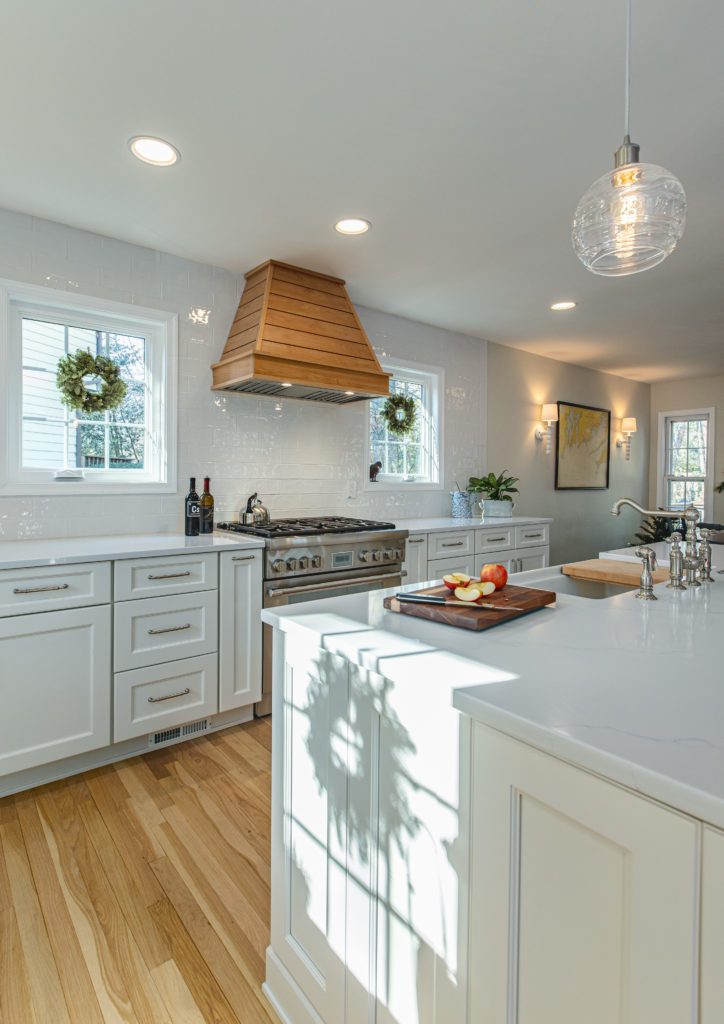
With semi-custom cabinets, you have the freedom to select from a range of styles, finishes, and hardware options. You can choose the door style that matches your desired aesthetic, whether it’s a sleek modern look or a classic traditional design. Additionally, you can select the color or stain that complements the overall theme of your kitchen.
Another advantage of semi-custom cabinets is the ability to customize certain features. You can opt for additional storage options such as pull-out shelves, spice racks, or built-in organizers to maximize the functionality of your kitchen. Additionally, you can choose the type of wood or material used for the cabinet construction, ensuring durability and longevity.
When estimating the cost of semi-custom cabinets, it’s important to consider factors such as the size of your kitchen, the number of cabinets needed, and any additional customization options. While semi-custom cabinets may be slightly more expensive than stock cabinets, they offer a higher level of customization and quality compared to their off-the-shelf counterparts.
In conclusion, if you’re looking for a balance between customization and affordability, semi-custom cabinets are an excellent choice for your kitchen renovation project. With the ability to choose from pre-designed options and tailor certain aspects to your preference, you can create a kitchen that reflects your personal style while staying within your budget.
2.1.3 Stock Cabinets
Stock cabinets are the most cost-effective option when it comes to kitchen renovations. These cabinets are readily available in standard sizes and designs, making them a popular choice for homeowners on a budget. With stock cabinets, you don’t have to wait for custom or semi-custom options to be manufactured, as they are already in stock and ready for immediate purchase.
One of the main advantages of stock cabinets is their affordability. Since they are mass-produced, they are generally less expensive than custom or semi-custom cabinets. This is great news for those looking to save money on their kitchen renovation project without compromising on quality.
Stock cabinets come in a variety of styles and finishes, allowing you to find something that suits your taste and complements your kitchen design. While they may not offer the same level of customization as custom-made or semi-custom cabinets, they still provide a range of options to choose from.
When selecting stock cabinets, it’s important to consider the dimensions of your kitchen space. Since stock cabinets come in standard sizes, you need to ensure that they will fit properly in your kitchen layout. However, if you have a standard-sized kitchen, this shouldn’t be a problem.
In conclusion, stock cabinets are a cost-effective and convenient option for kitchen renovations. They offer affordability, availability, and a variety of styles to choose from. If you’re looking to update your kitchen without breaking the bank, stock cabinets are definitely worth considering.
2.2 Countertops
When it comes to choosing the right countertops for your kitchen renovation, there are several options to consider. Exploring different countertop materials like granite, quartz, and laminate can help you determine the best fit for your budget and design preferences.
Granite Countertops: Granite is a popular choice for its durability and natural beauty. It is heat-resistant, scratch-resistant, and comes in a variety of colors and patterns. However, granite countertops can be more expensive compared to other materials.
Quartz Countertops: Quartz countertops are engineered stone surfaces made from a combination of natural quartz and resin. They are highly durable, non-porous, and resistant to stains and scratches. Quartz countertops offer a wide range of colors and patterns to choose from, making them a versatile option for any kitchen.
Laminate Countertops: Laminate countertops are a budget-friendly option that can mimic the look of natural stone or wood. They are easy to clean and maintain, but they may not be as durable as granite or quartz. Laminate countertops come in a variety of colors and patterns, allowing you to achieve the desired aesthetic for your kitchen.
When selecting your countertop material, consider factors such as durability, aesthetics, and cost. Granite and quartz offer superior durability and a luxurious look, but they come at a higher price point. Laminate countertops, on the other hand, provide a cost-effective option with a wide range of design possibilities. Ultimately, the best choice for your kitchen renovation will depend on your budget and personal preferences.
2.3 Flooring
When it comes to renovating your kitchen, choosing the right flooring is crucial. Not only does it impact the overall aesthetics of the space, but it also plays a significant role in terms of durability, maintenance, and installation expenses. To accurately estimate the costs of your kitchen renovation, it’s essential to research various flooring options and consider these factors.
One popular flooring choice for kitchens is hardwood. Hardwood floors are known for their timeless beauty and durability. However, they can be more expensive compared to other options. Research the average costs of hardwood flooring materials and installation services to get a better understanding of the expenses involved.
Another common flooring option is tile. Tiles offer a wide range of design possibilities and are highly durable, making them suitable for high-traffic areas like the kitchen. Consider the different types of tiles available, such as ceramic, porcelain, or natural stone, and their respective costs. Additionally, factor in the cost of installation and any maintenance requirements.
Vinyl flooring is a more budget-friendly option that still provides durability and versatility. It comes in various styles, including sheets, tiles, or planks, and can mimic the appearance of other materials like hardwood or tile. Research the average costs of vinyl flooring materials and installation to determine if it aligns with your budget and desired aesthetic.
When estimating the costs of flooring for your kitchen renovation, it’s crucial to consider factors beyond the initial expenses. Think about the long-term durability and maintenance requirements of each material. Additionally, factor in the cost of professional installation if you’re not planning to install the flooring yourself. By thoroughly researching the costs and considering these factors, you can make an informed decision that suits both your budget and your kitchen’s needs.
3. Plan for Labor Costs
When planning for your kitchen renovation, it’s essential to consider the labor costs involved. Hiring professionals such as contractors, electricians, plumbers, and painters is necessary to ensure the success of your project. However, their expertise and services come at a cost, which should be factored into your overall renovation budget.
Contractors play a crucial role in managing and overseeing the renovation process. They coordinate with other professionals, handle permits and inspections, and ensure that the project is completed on time and within budget. When estimating labor costs, it’s important to understand the fees associated with hiring a contractor. These fees may include hourly rates, project management fees, and additional charges for subcontractors or specialized services.
In addition to contractors, you may need to hire electricians, plumbers, and painters for specific tasks. These professionals bring their skills and expertise to the project, ensuring that electrical and plumbing systems are properly installed and that the paintwork is flawless. When budgeting for labor costs, consider their hourly rates or fixed fees, as well as any additional expenses for permits or inspections.
Creating a detailed plan for labor costs will help you allocate your budget effectively and avoid any surprises along the way. By considering the expertise and services of professionals like contractors, electricians, plumbers, and painters, you can ensure that your kitchen renovation is completed to the highest standards, contributing to the overall success of your project.
3.1 Contractor Fees
When estimating the costs of your kitchen renovation, it’s important to understand the fees associated with hiring a contractor. Contractors play a crucial role in overseeing the entire renovation process and ensuring that everything is done smoothly and efficiently. Here are some key factors to consider when it comes to contractor fees:
Hourly Rates: Contractors typically charge an hourly rate for their services. This rate can vary depending on factors such as the contractor’s experience, location, and the complexity of the project. It’s essential to discuss and negotiate the hourly rate with your contractor beforehand to ensure it aligns with your budget.
Project Management Fees: In addition to the hourly rate, contractors may also charge project management fees. These fees cover the cost of overseeing the entire renovation, including coordinating with subcontractors, managing timelines, and ensuring that all tasks are completed on schedule. Project management fees are usually calculated as a percentage of the total project cost.
Additional Charges: Depending on the nature of your kitchen renovation, there may be additional charges for subcontractors or specialized services. For example, if your project requires the expertise of an electrician or a plumber, the contractor may charge extra for their services. It’s important to discuss these potential additional charges with your contractor upfront to avoid any surprises in your final bill.
By understanding the various fees associated with hiring a contractor, you can better estimate the overall costs of your kitchen renovation. Remember to thoroughly communicate with your contractor and ask for a detailed breakdown of all fees to ensure transparency and avoid any unexpected expenses.
3.2 Other Professional Services
When estimating the costs of your kitchen renovation, it’s important to consider the expenses associated with hiring other professional services like electricians, plumbers, and painters. These professionals play a vital role in ensuring that your renovation project is completed safely and to the highest standards.
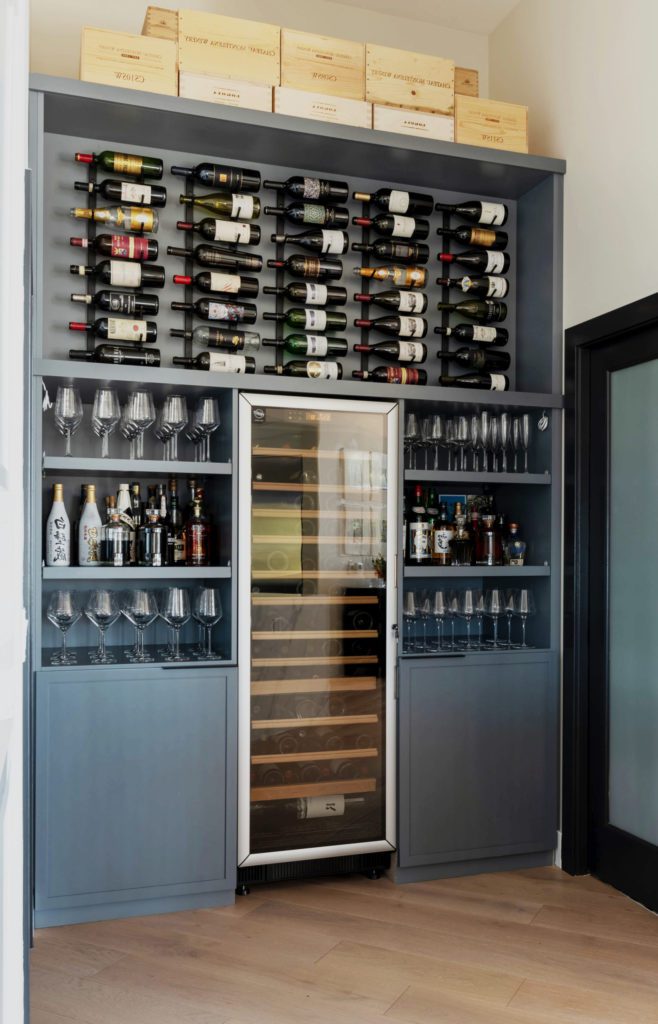
When hiring electricians, you need to factor in their hourly rates or fixed fees. Electricians are responsible for installing and maintaining electrical systems in your kitchen, ensuring that everything is up to code and functioning properly. Additionally, you may need to budget for any necessary permits or inspections that may be required for electrical work.
Plumbers are another essential service to consider. They will handle the installation of plumbing fixtures, such as sinks and faucets, and ensure that your kitchen has proper water supply and drainage. Like electricians, plumbers have their own hourly rates or fixed fees, and you may also need to account for permits or inspections related to plumbing work.
Finally, painters can give your kitchen a fresh new look by applying a coat of paint to the walls, cabinets, or other surfaces. The cost of hiring painters will depend on factors such as the size of your kitchen, the complexity of the paint job, and the type of paint you choose. It’s important to discuss your requirements with painters and obtain quotes to accurately estimate these costs.
By considering the costs of hiring electricians, plumbers, and painters, including their hourly rates or fixed fees, and any additional expenses for permits or inspections, you can ensure that your kitchen renovation budget is comprehensive and realistic. This will help you avoid any surprises and keep your project on track.
4. Account for Appliances
When estimating the costs of your kitchen renovation, it’s important to account for the expenses of new appliances. Appliances such as refrigerators, ovens, and dishwashers can significantly impact your overall budget. Here are some factors to consider when including appliance costs in your estimates:
- Brand: Different appliance brands come with varying price tags. Research different brands and their reputations for quality and reliability to find the best fit for your budget.
- Features: Appliances can have a wide range of features that can affect their prices. Consider the specific features you need and prioritize them based on your budget.
- Energy Efficiency: Energy-efficient appliances may have a higher upfront cost but can save you money in the long run through reduced energy consumption. Look for appliances with the ENERGY STAR label to ensure they meet energy efficiency standards.
It’s also important to factor in the installation costs of appliances. Some appliances may require professional installation, which can add to your overall expenses. Additionally, consider any additional accessories or modifications that may be needed to accommodate the new appliances in your kitchen.
By including appliance costs in your estimates and considering factors such as brand, features, and energy efficiency, you can ensure that your budget accurately reflects the total expenses of your kitchen renovation project.
5. Anticipate Unforeseen Expenses
When undertaking a kitchen renovation, it’s crucial to anticipate and plan for unforeseen expenses that may arise during the process. No matter how well you plan, there may be unexpected costs that can throw your budget off track. To avoid any financial surprises, it’s wise to set aside a contingency fund.
A contingency fund is a separate budget that is specifically allocated to cover any unforeseen expenses that may arise during the renovation. This fund acts as a safety net, ensuring that you have the necessary funds to address any unexpected issues without derailing your entire project.
There are several potential unforeseen expenses that you should consider when setting up your contingency fund. One common issue is structural issues. During the renovation process, it’s possible that you may discover underlying structural problems that need to be addressed. These can include issues with the foundation, walls, or even the plumbing and electrical systems. Having a contingency fund in place will allow you to tackle these issues without causing delays or compromising the quality of your renovation.
Hidden damages are another potential expense that you should anticipate. When removing old fixtures or tearing down walls, you may uncover hidden damages such as water damage, mold, or pest infestations. These issues will need to be addressed promptly to ensure the safety and longevity of your new kitchen. By having a contingency fund, you’ll be able to cover the costs of repairs or remediation without causing any financial strain.
Lastly, design changes are another factor that can contribute to unexpected expenses. As you progress through the renovation process, you may decide to make alterations to your original design plans. Whether it’s changing the layout, upgrading materials, or adding new features, these changes can come with additional costs. Having a contingency fund will allow you to make these adjustments without compromising your overall budget.
Overall, setting aside a contingency fund is a smart and proactive approach to managing unforeseen expenses during a kitchen renovation. By anticipating and planning for these costs, you’ll be able to navigate any unexpected challenges that may arise, ensuring a smooth and successful renovation project.
Frequently Asked Questions
- Q: How do I determine my kitchen renovation budget?A: To set a realistic budget for your kitchen renovation, you should consider factors such as the size of your kitchen, the quality of materials you desire, and any additional features or upgrades you plan to include. It’s important to allocate funds for both materials and labor costs.
- Q: How can I estimate the cost of cabinets?A: Cabinet costs can vary depending on factors like material, design, and customization level. Stock cabinets are generally the most affordable option, while custom-made cabinets tend to be the most expensive. Semi-custom cabinets offer a balance between customization and affordability. Researching different cabinet options and consulting with professionals can help you estimate the cost more accurately.
- Q: What should I consider when estimating countertop costs?A: When estimating countertop costs, you should consider factors such as the material you prefer (granite, quartz, laminate, etc.), the size of your kitchen, and any additional features or edge treatments you desire. Different materials have varying price ranges, so it’s important to research and compare prices to get a better estimate.
- Q: How do I factor in labor costs?A: Labor costs can vary depending on the complexity of the renovation and the professionals you hire. It’s important to research and obtain quotes from contractors, electricians, plumbers, and other specialists you may need. Consider their hourly rates or fixed fees, as well as any additional expenses like permits or inspections.
- Q: Should I include appliance costs in my estimate?A: Yes, you should include the costs of new appliances in your estimate. Consider the brand, features, and energy efficiency of the appliances you desire. This will help you determine their prices and factor them into your overall renovation budget.
- Q: Do I need a contingency fund for unforeseen expenses?A: Yes, it is highly recommended to set aside a contingency fund for unexpected costs that may arise during the renovation process. Structural issues, hidden damages, or design changes can all lead to additional expenses. Having a contingency fund will help you handle these situations without exceeding your budget.
